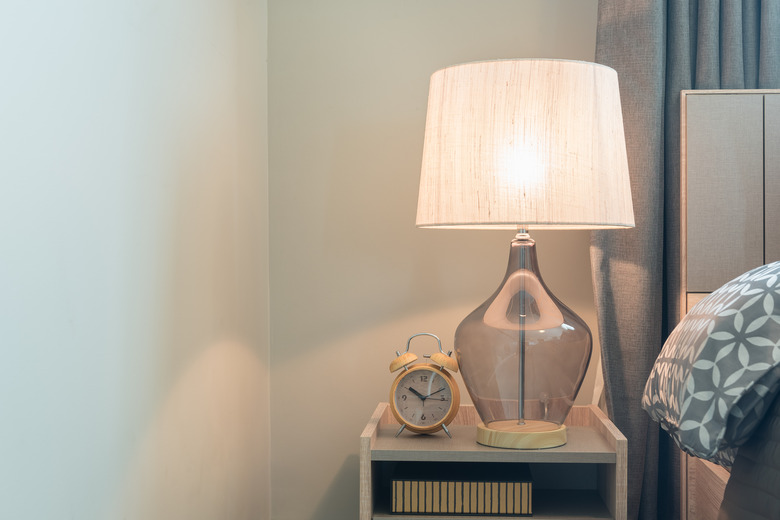How To Remove Water Stains From A Lampshade
Removing stains from fabric can be a daunting task. Fabric can be tricky to clean, depending on the material, and often people make the mistake of only cleaning the area with the stain on it, which then creates an uneven look to the material. Removing water stains can be particularly frustrating since water seems like something that would help treat stains, but in many cases, it causes significant damage to the fabric. However, there are a variety of strategies that can be used to clean water marks from fabric lampshades without requiring expensive equipment.
Remove a Water Mark From a Lampshade
Remove a Water Mark From a Lampshade
The most important key to removing water marks from a lampshade is to be sure that you apply moisture to the entire lampshade. By cleaning the entire lampshade, you are removing not only the water stains but also the dust, debris and buildup that sets into fabric over time. Often, it isn't until a small portion of the lampshade has been cleaned that you are even able to see that there was dirt on the surface of the shade from which you were trying to remove spots. A thorough distribution of water and detergent will clean the entire lampshade. An even distribution of water application ensures that the entire lampshade will look clean and fresh rather than only the area that you treated.
How to Remove a Lampshade
How to Remove a Lampshade
Start by taking the lampshade off of the lamp. This is usually done by unscrewing the top of the lamp that is holding the shade in place. Many lampshades are on a metal frame which can grow hot from the heat of the bulb, so if you are taking off one of these shades, be sure that the light has been off long enough that the lampshade is cool to the touch. Some lampshades may be attached to a hanging pendant lamp. In these cases, there is usually a screw holding on the lampshade that can be easily unscrewed to allow you to remove the shade.
How to Clean Lampshades
How to Clean Lampshades
Once the shade is off of the lamp, submerge the lampshade in a bucket or tub of lukewarm water that contains sufficient laundry detergent to produce suds. Depending on the type of fabric from which your lampshade is made, you may need a gentle detergent. Soak the lampshade completely, holding it under the water if it begins to float up. You want to make sure that all of the lampshade is submerged in the water. Then, move over it with a sponge, rubbing at all water spots evenly and making sure that you scrub every part of the shade. After cleaning, be sure to rinse the shade with cool, clean water before patting dry with a large towel and allowing it to air dry.
Depending on the fabric from which the lampshade is made, you may need to use delicate detergent and avoid scrubbing with a sponge. Many people get nervous when they try to clean a silk lampshade because the fabric is so delicate and damage to it can be glaring. For a silk lampshade, use a delicate detergent and instead of scrubbing, gently press the water marks out of the fabric with a damp cloth. For plastic lampshades, it will be very easy to clean water marks since plastic is durable enough to withstand scrubbing with a sponge. The only lampshade that is likely not salvageable is a paper lampshade. If a paper lampshade gets water marks, you are going to have to replace the lampshade or learn to live with the stains.
